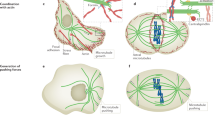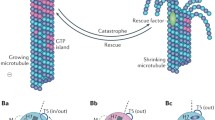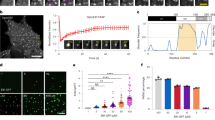Abstract
Microtubule dynamic instability is fundamentally important to the way cells respond to their environment and segregate their genetic material. A disparate class of proteins defined by their localisation to growing microtubule plus ends (’+TIPS’) play a key role in controlling microtubule dynamics and organisation. They directly impact upon the behaviour of the microtubule tip and link this structure to interfaces that include kinetochores and the cortex of the cell. Surprisingly, some +TIPs also have important functions at the microtubule minus end. These properties contribute to the important roles played by +TIPs in processes such as mitosis and cell migration. This review examines how recent advances have impacted our understanding of +TIP function in mammalian cells, with emphasis on the emergence of the EB1 family as a core component of +TIP activities. An overview of the use of +TIP imaging as a tool for the cell biologist is also presented.
Similar content being viewed by others
Author information
Authors and Affiliations
Corresponding author
Additional information
Received 4 August 2006; received after revision 29 September 2006; accepted 13 November 2006
Rights and permissions
About this article
Cite this article
Morrison, E.E. Action and interactions at microtubule ends. Cell. Mol. Life Sci. 64, 307–317 (2007). https://doi.org/10.1007/s00018-007-6360-3
Published:
Issue Date:
DOI: https://doi.org/10.1007/s00018-007-6360-3




